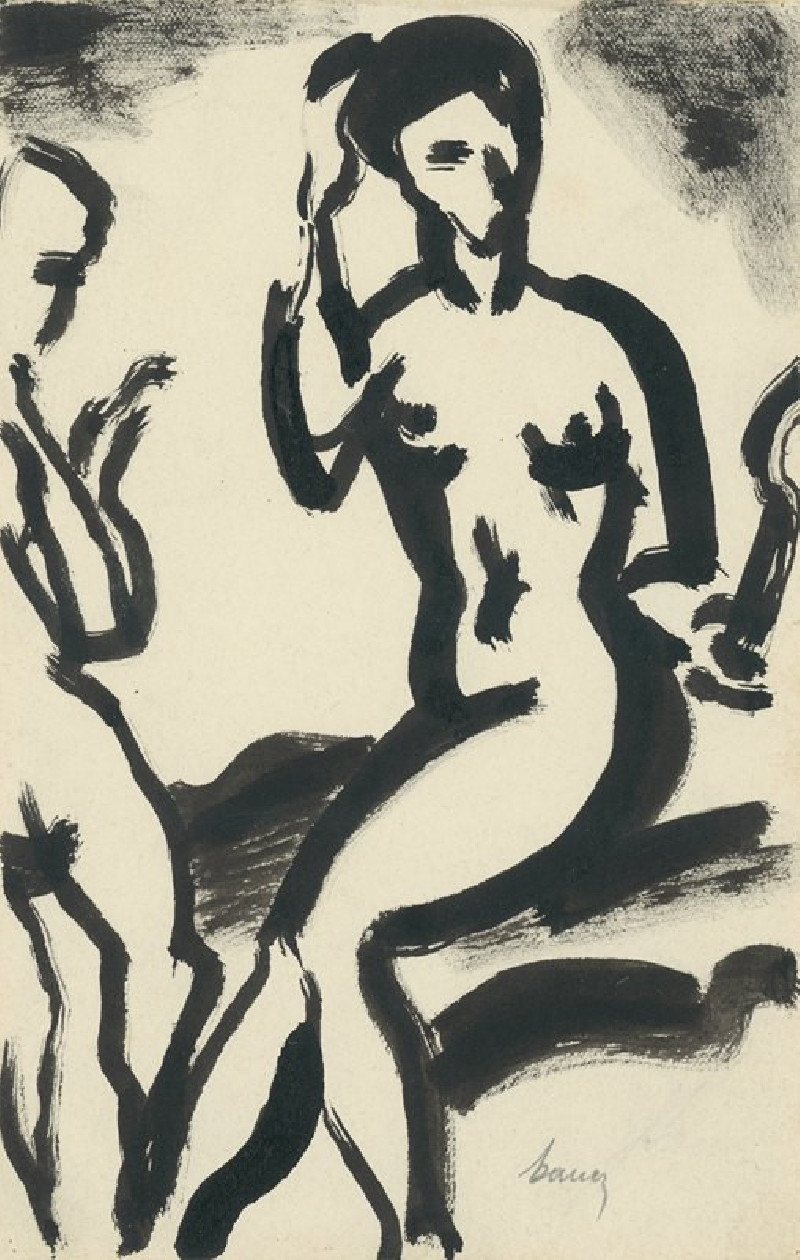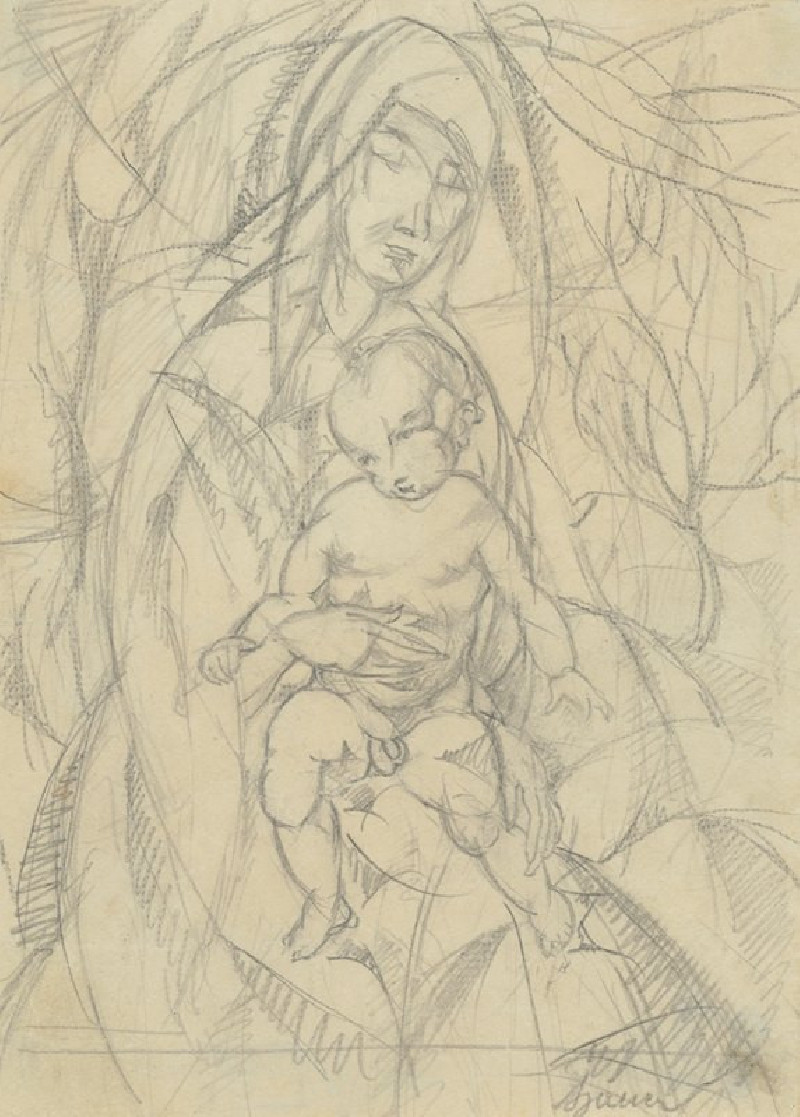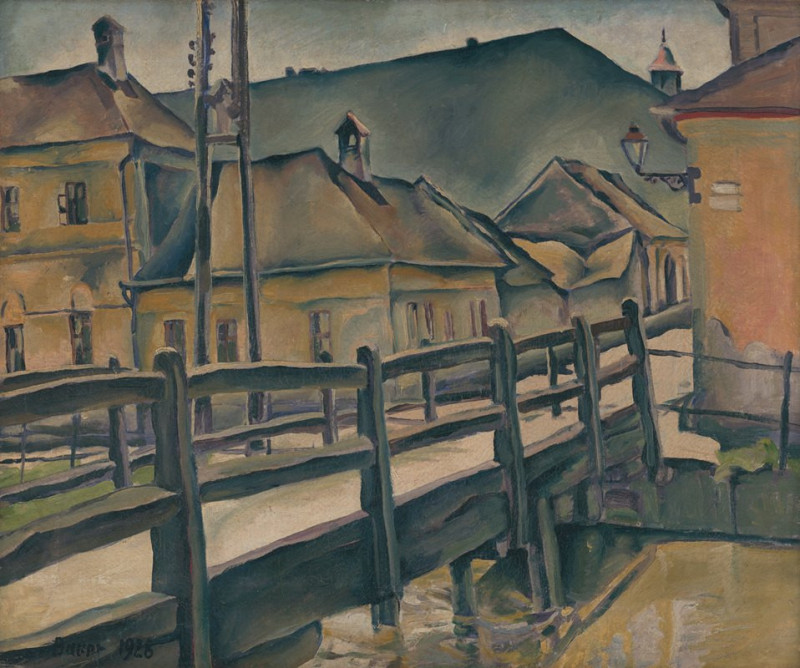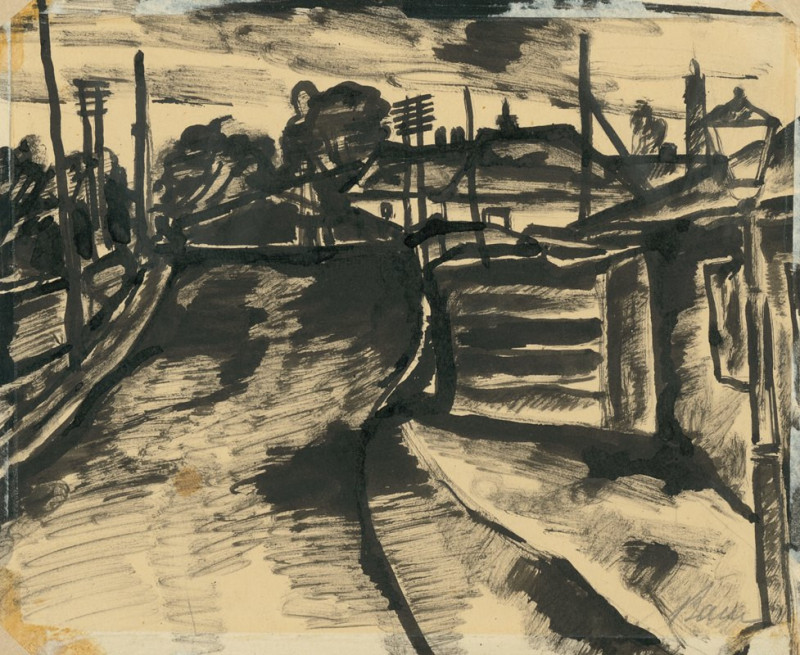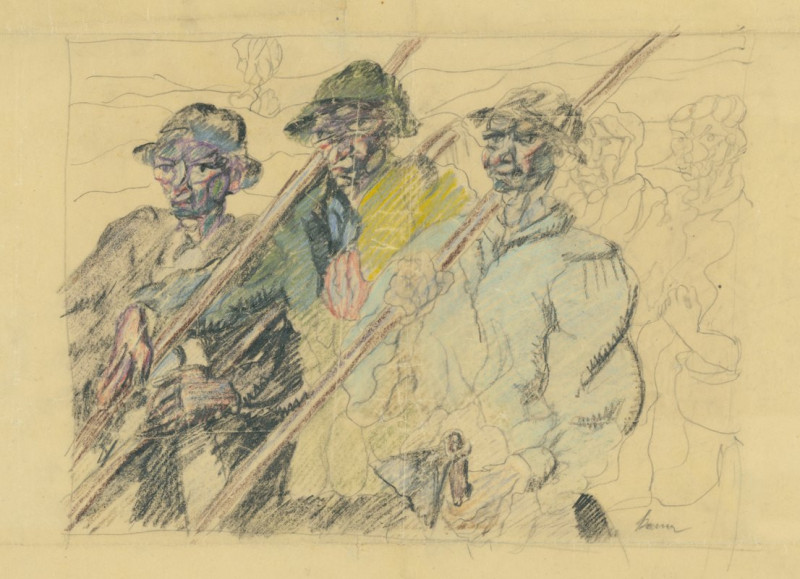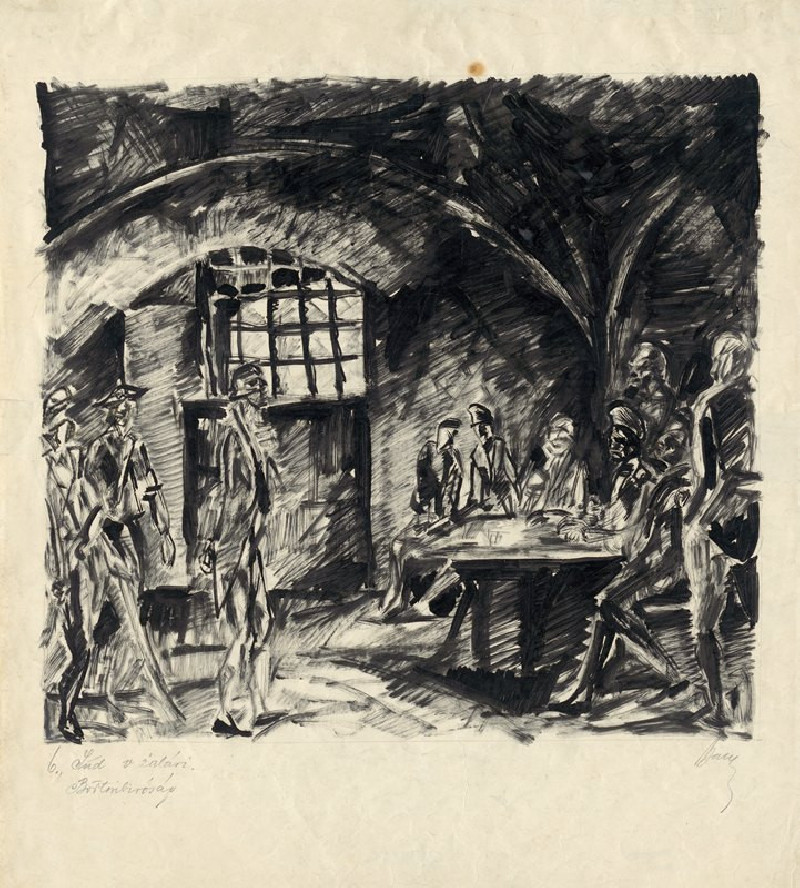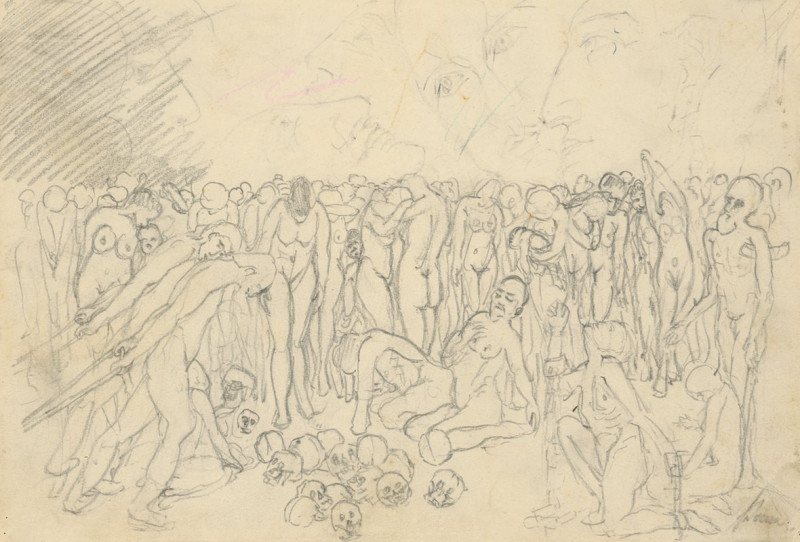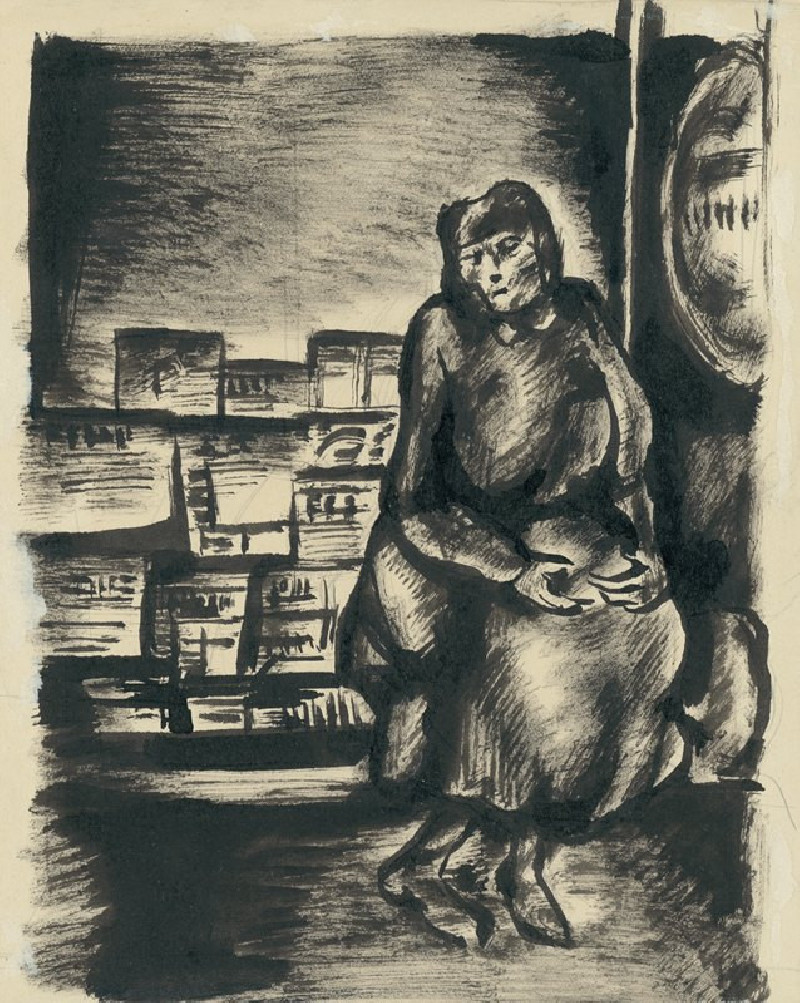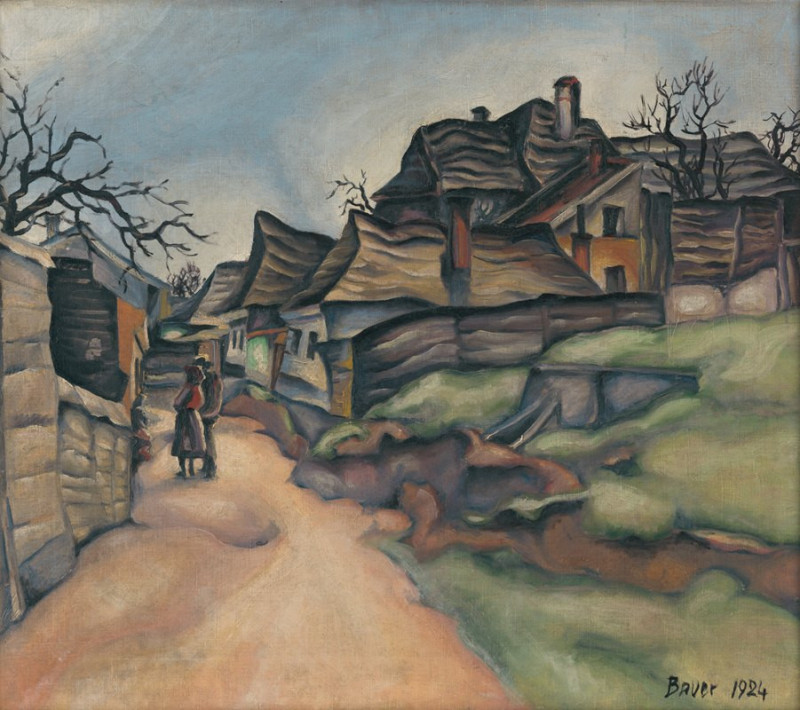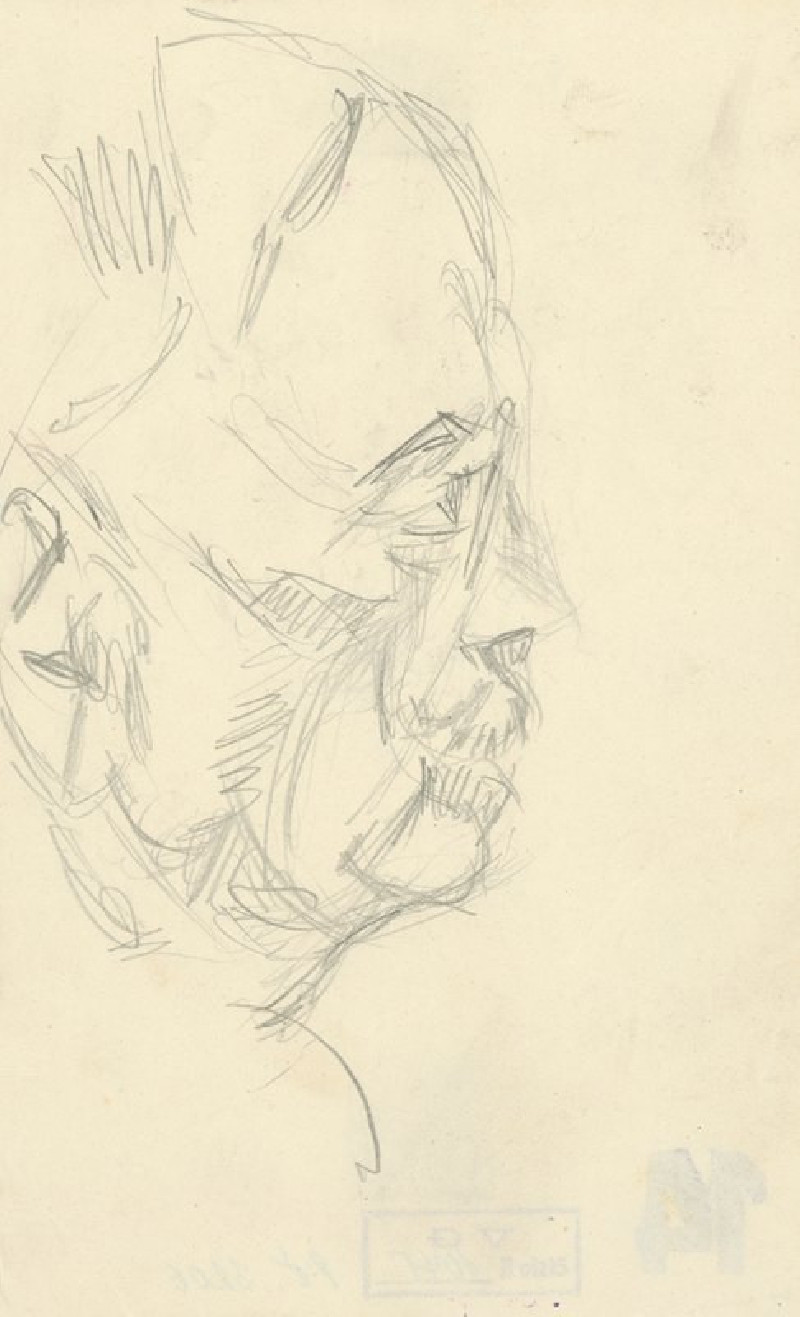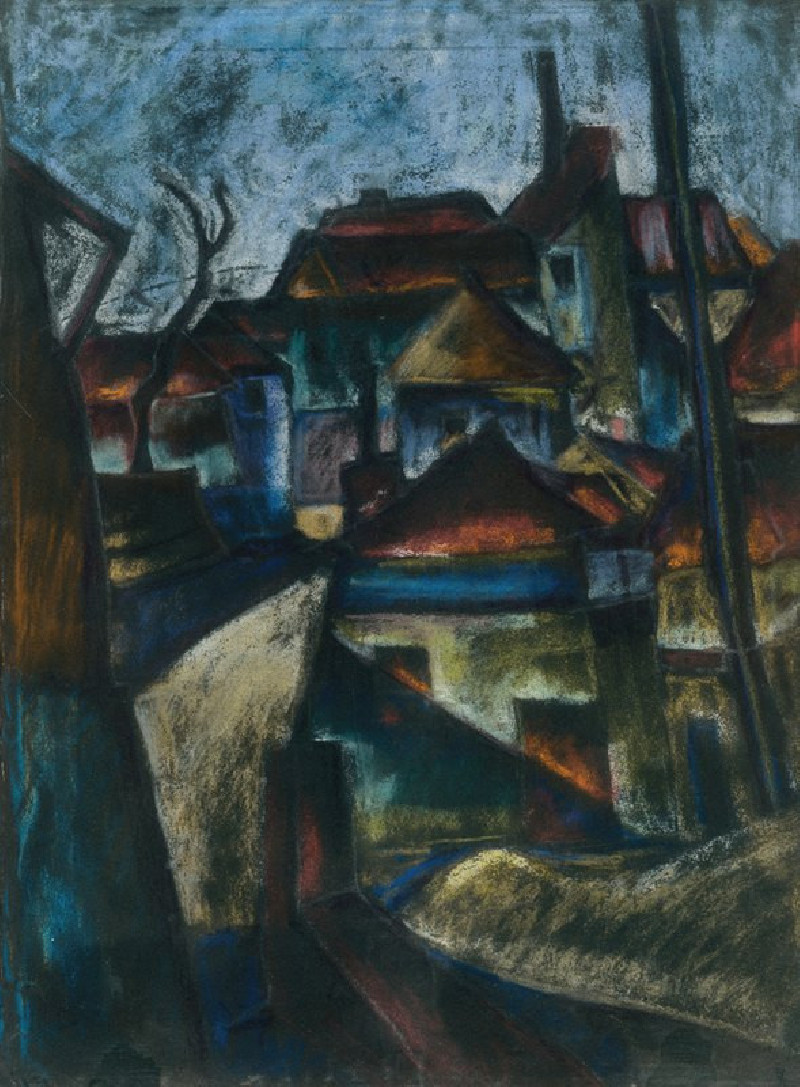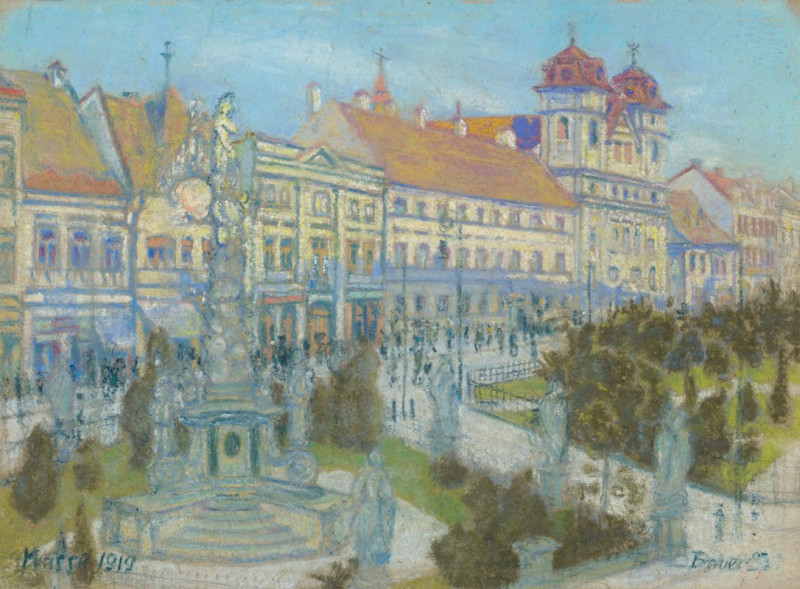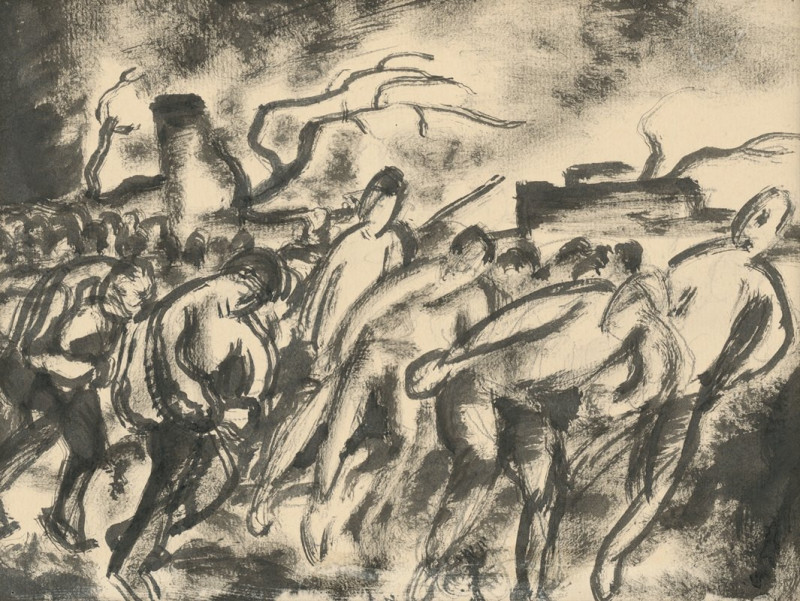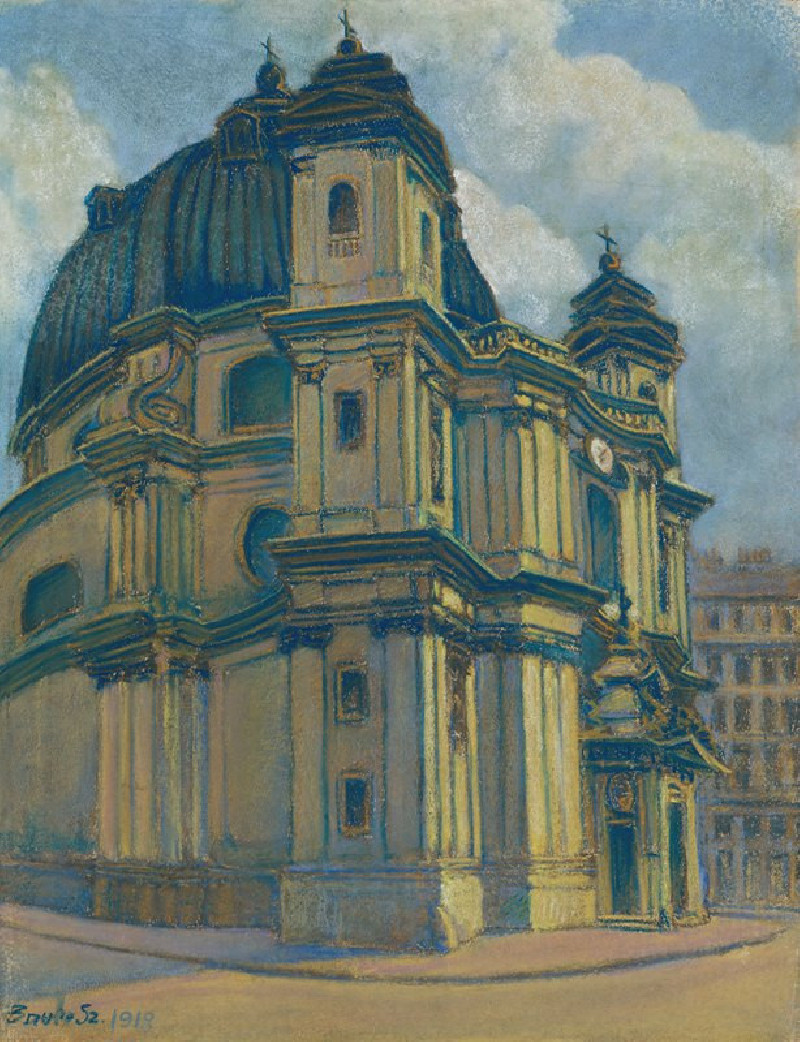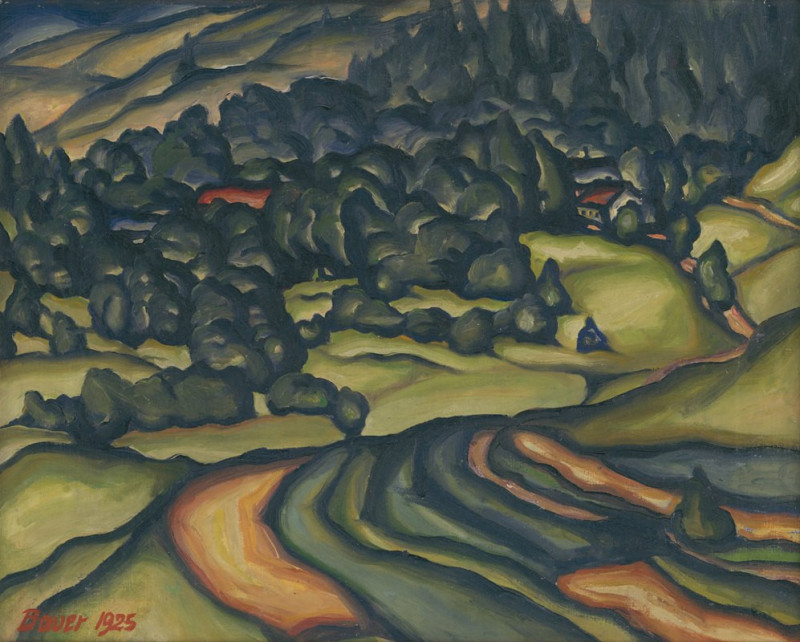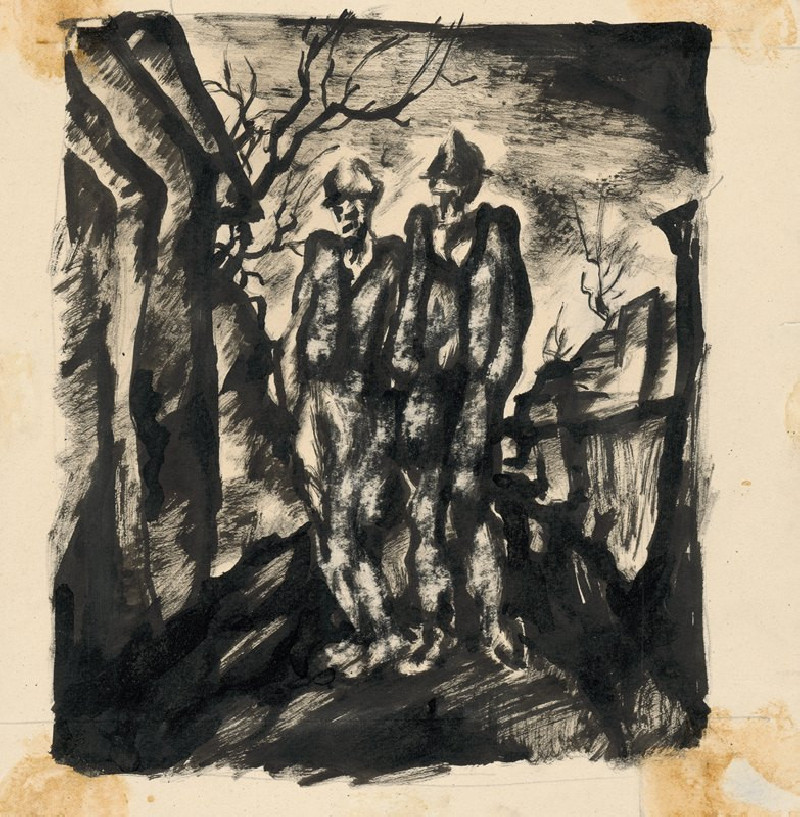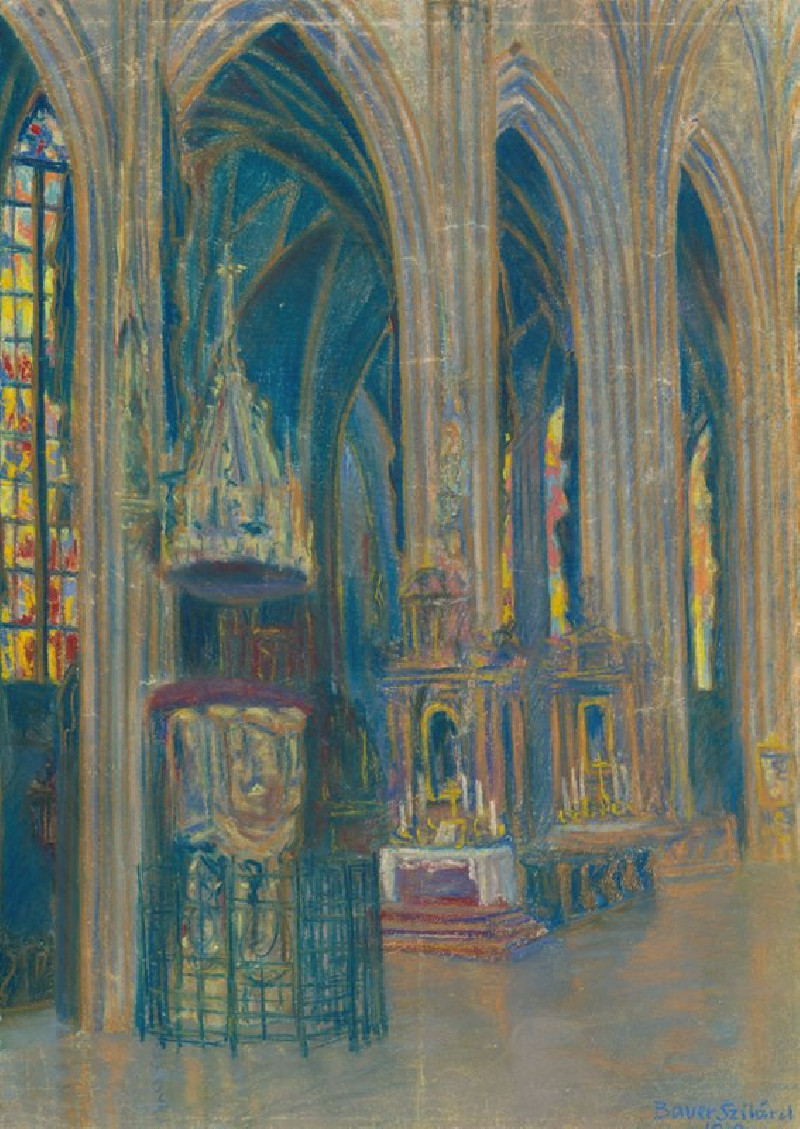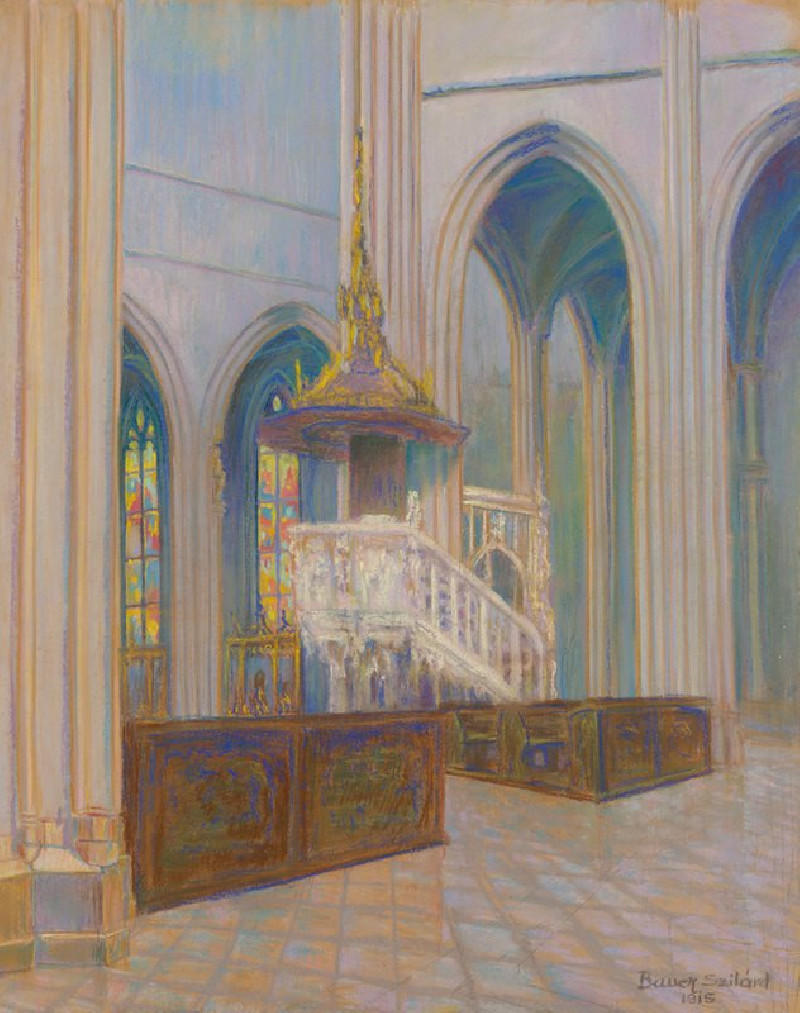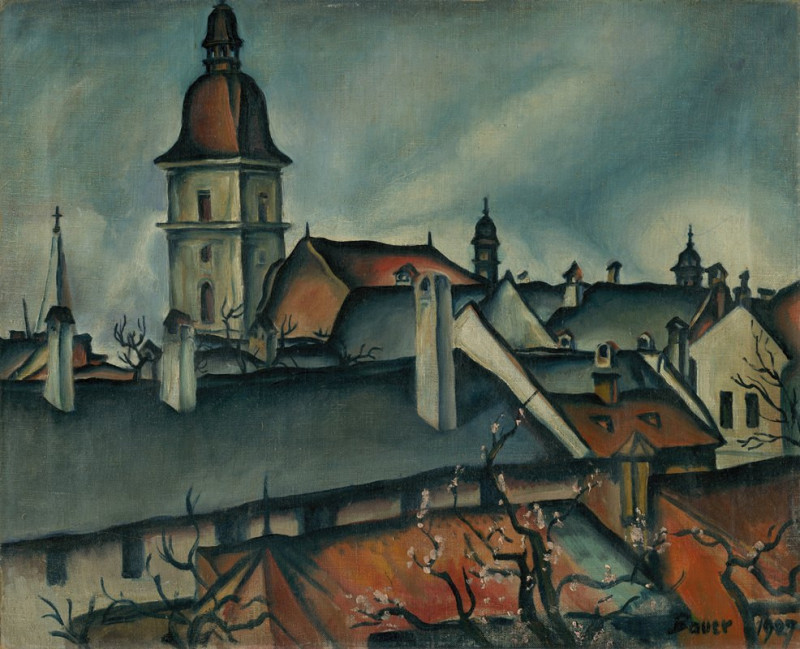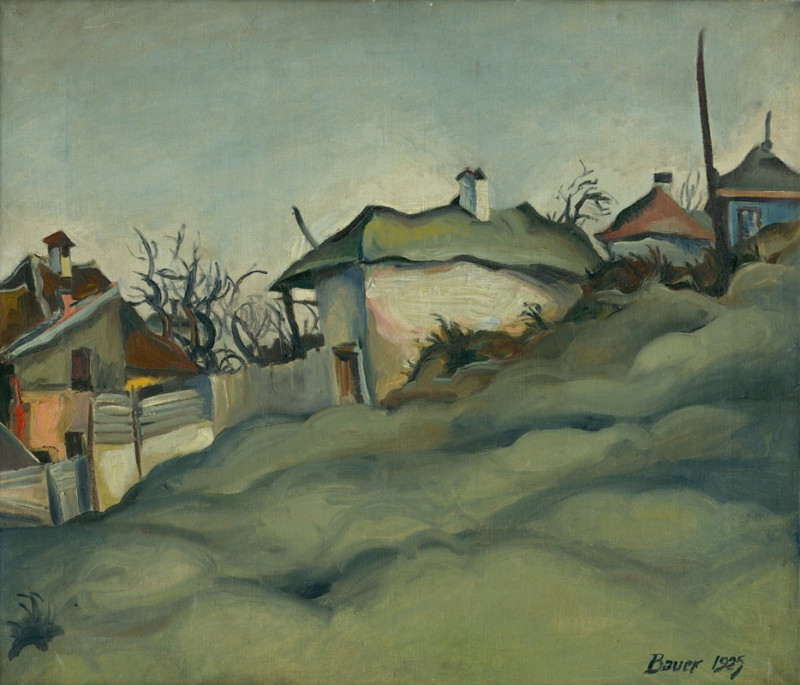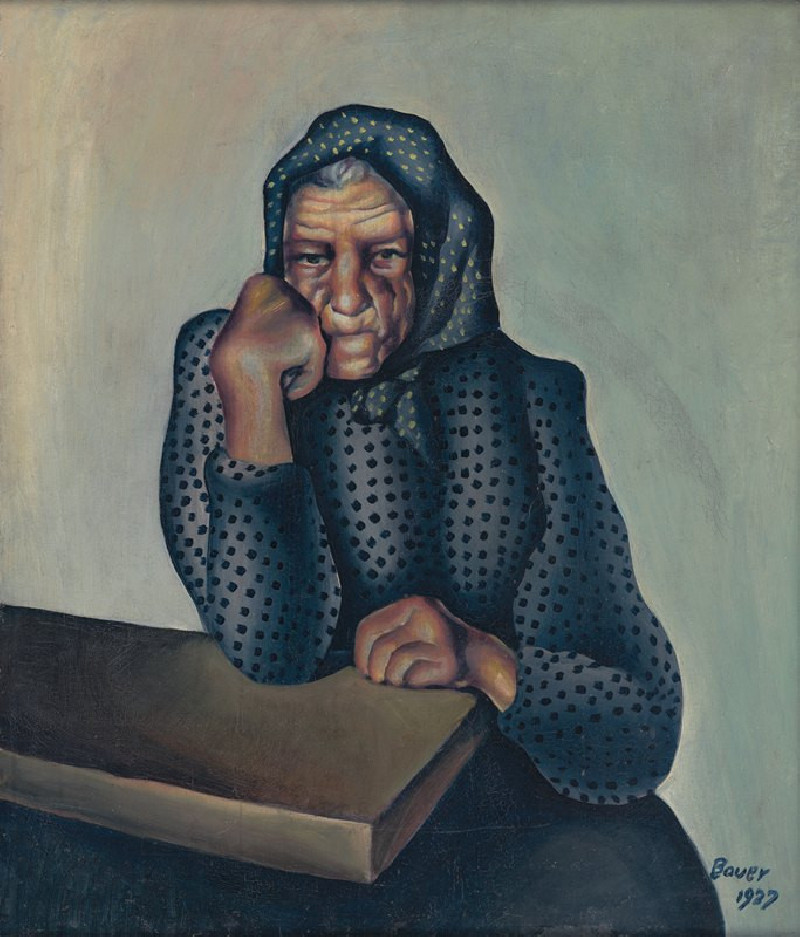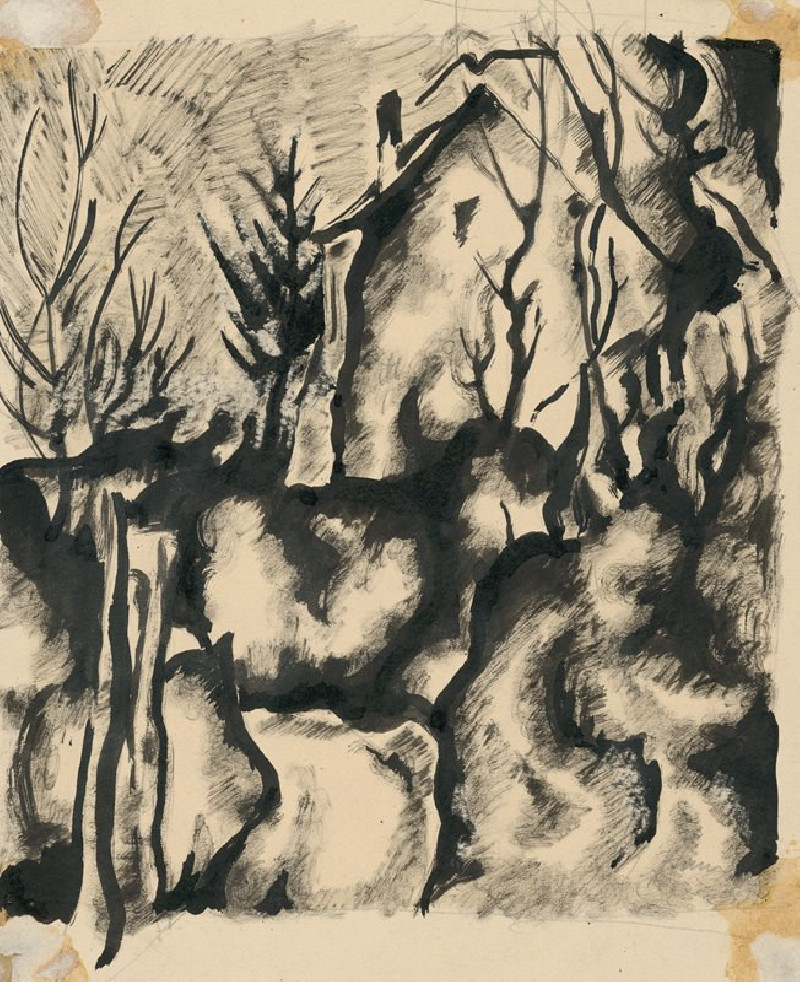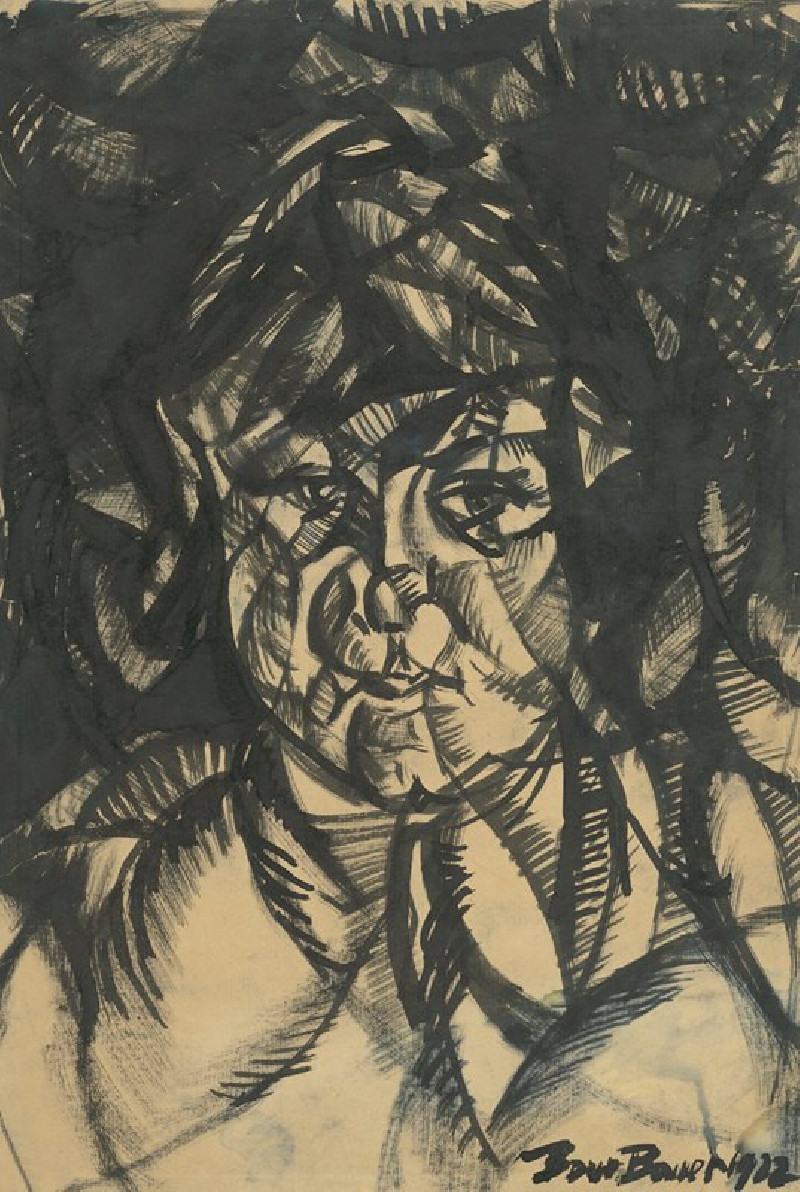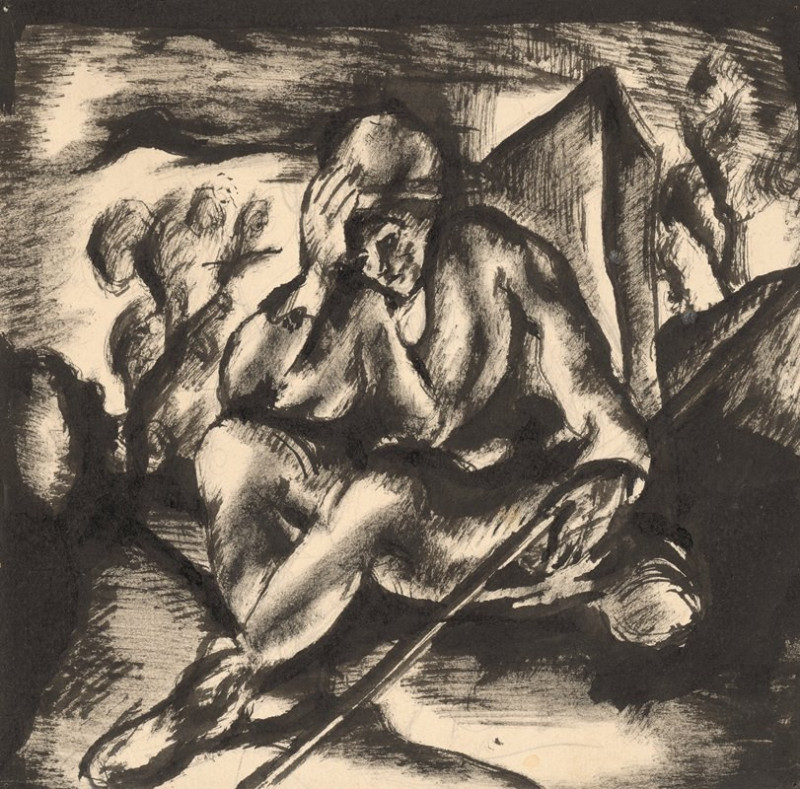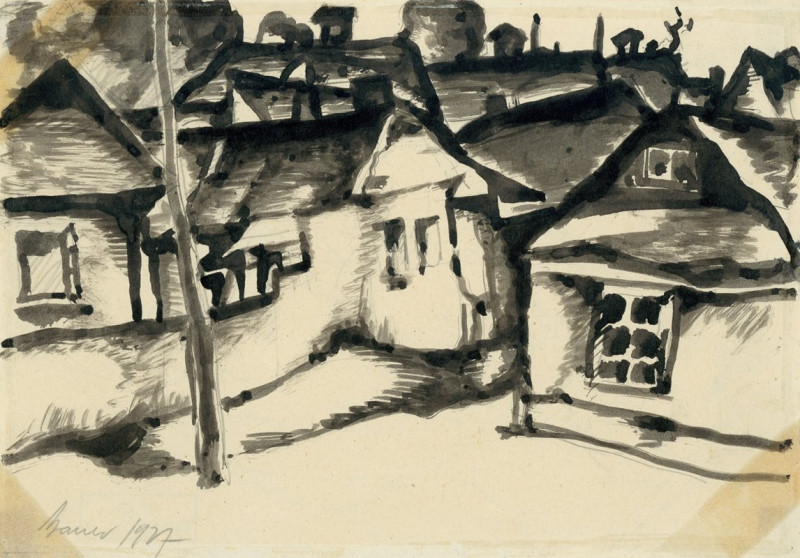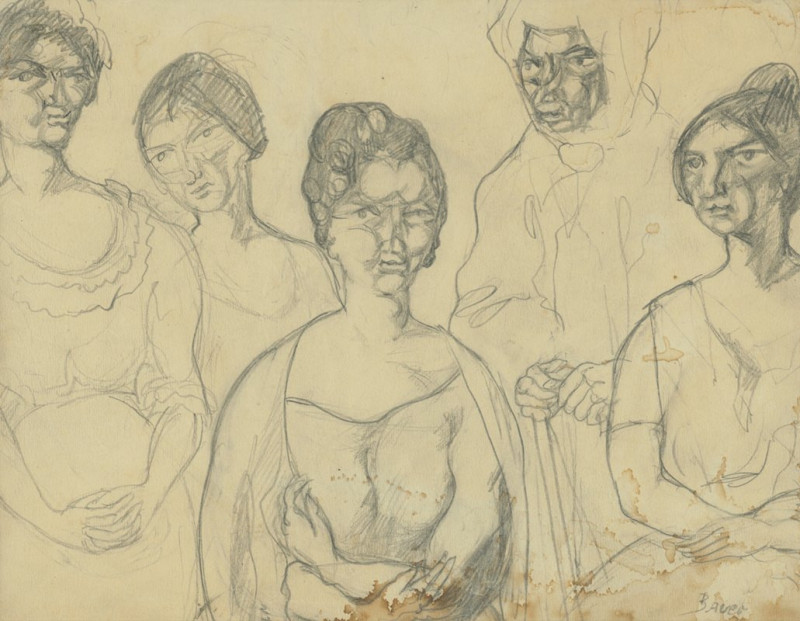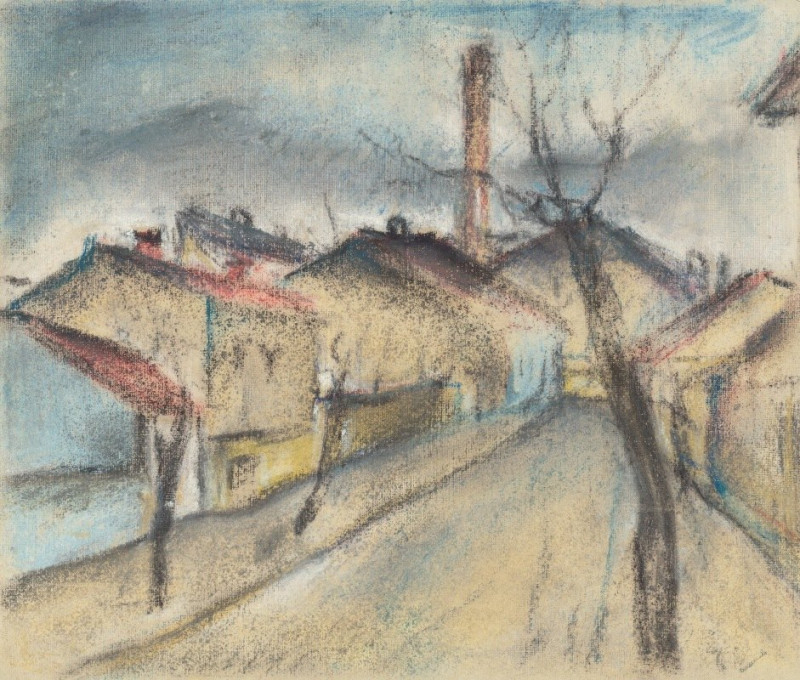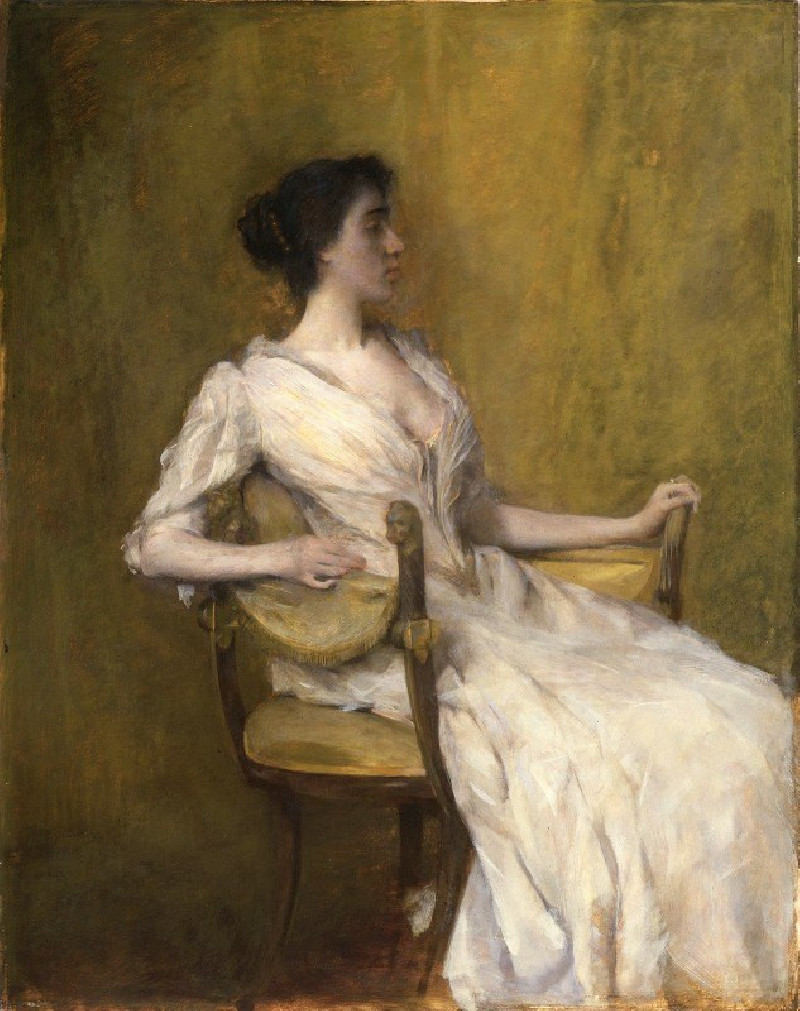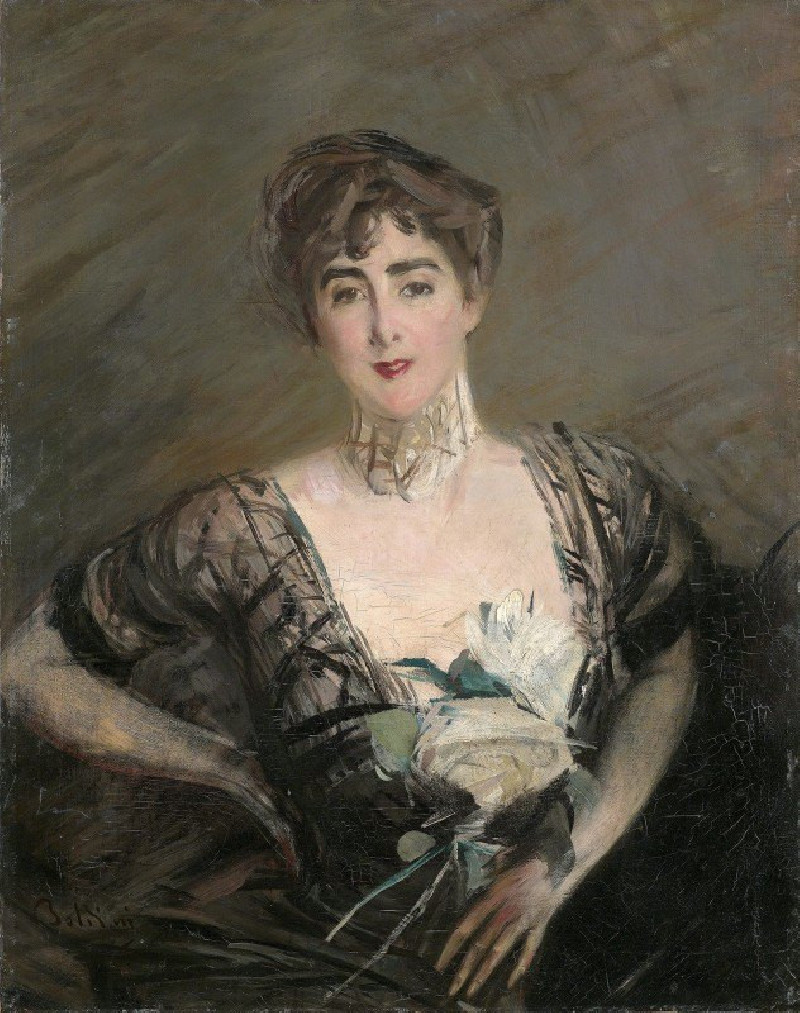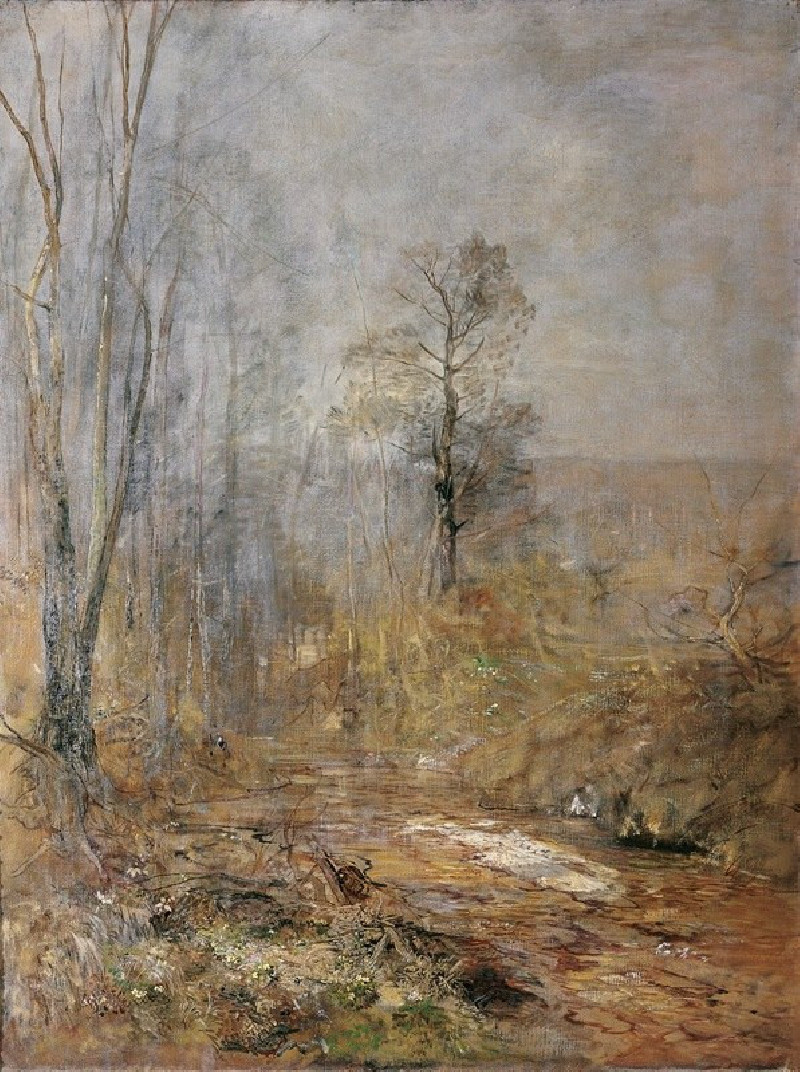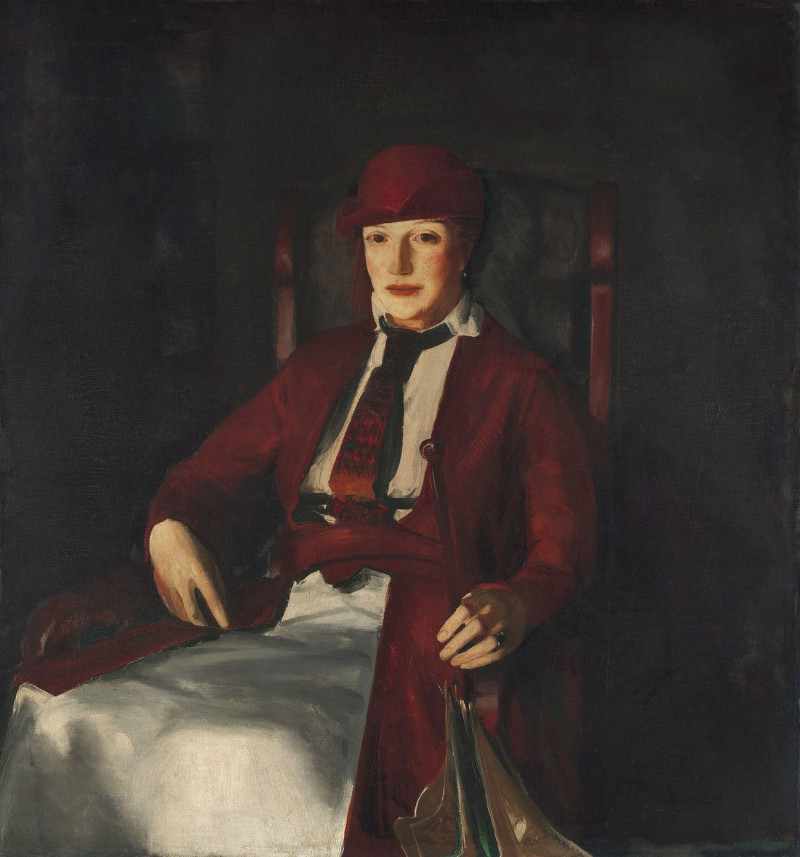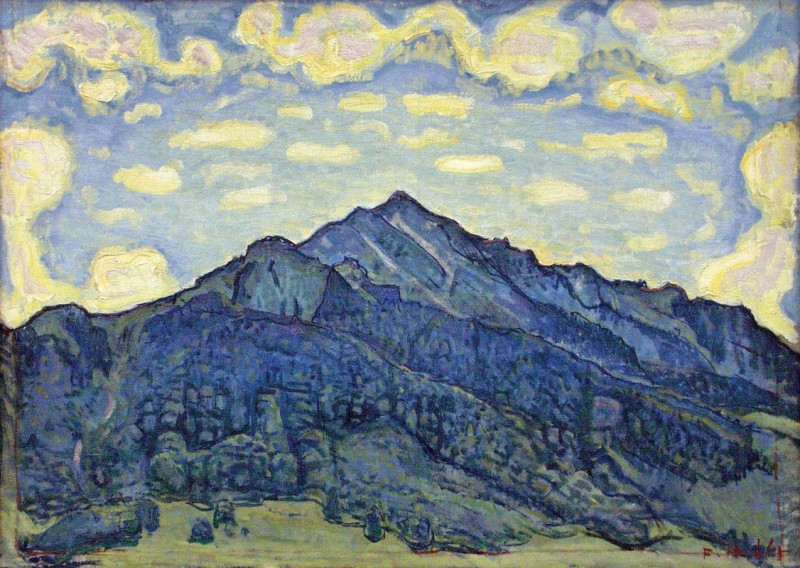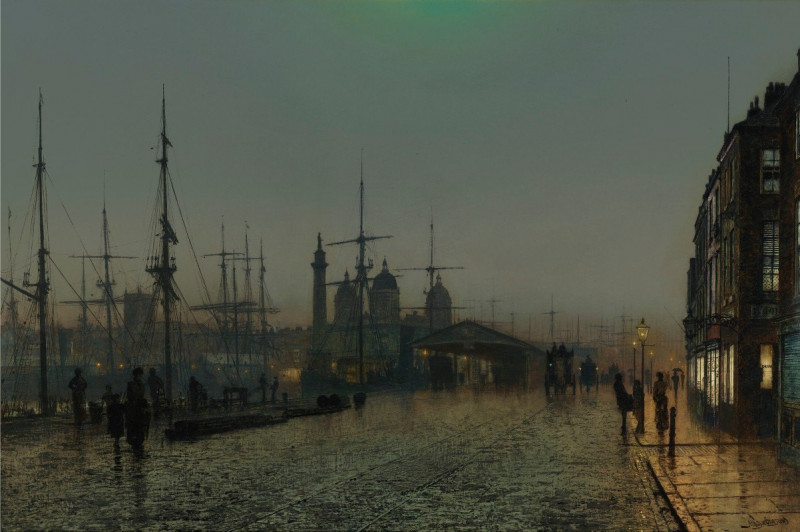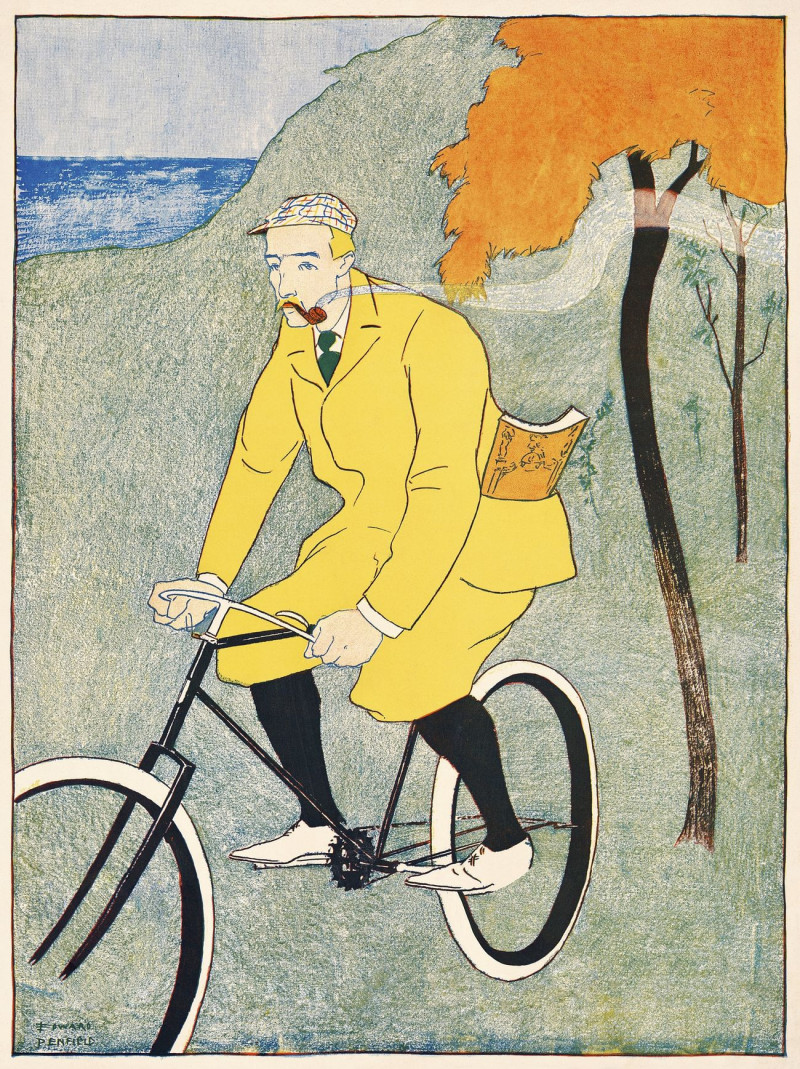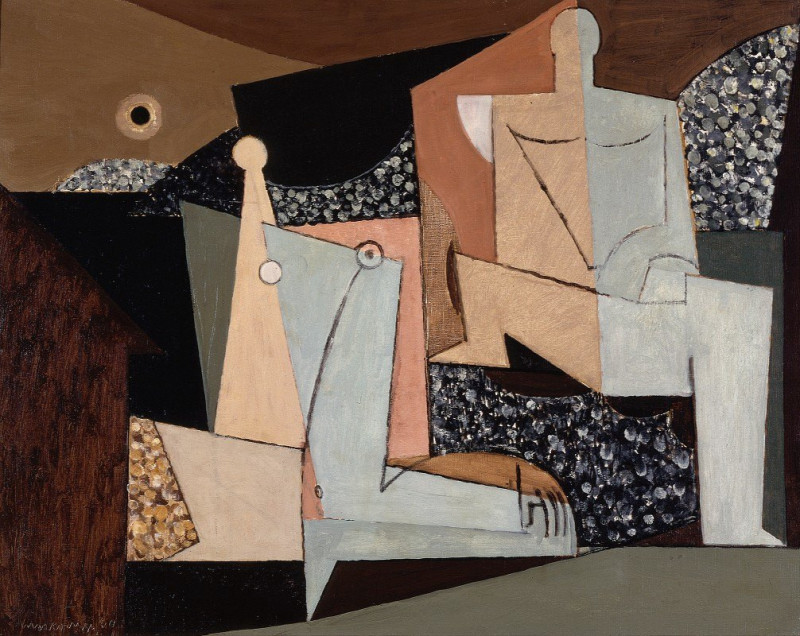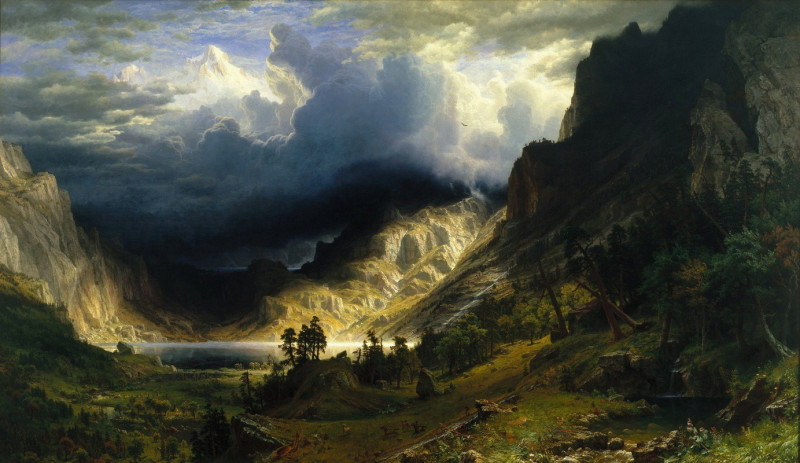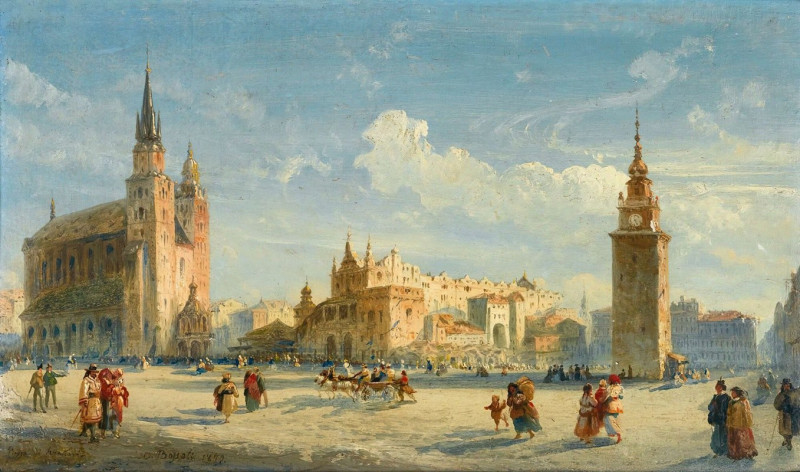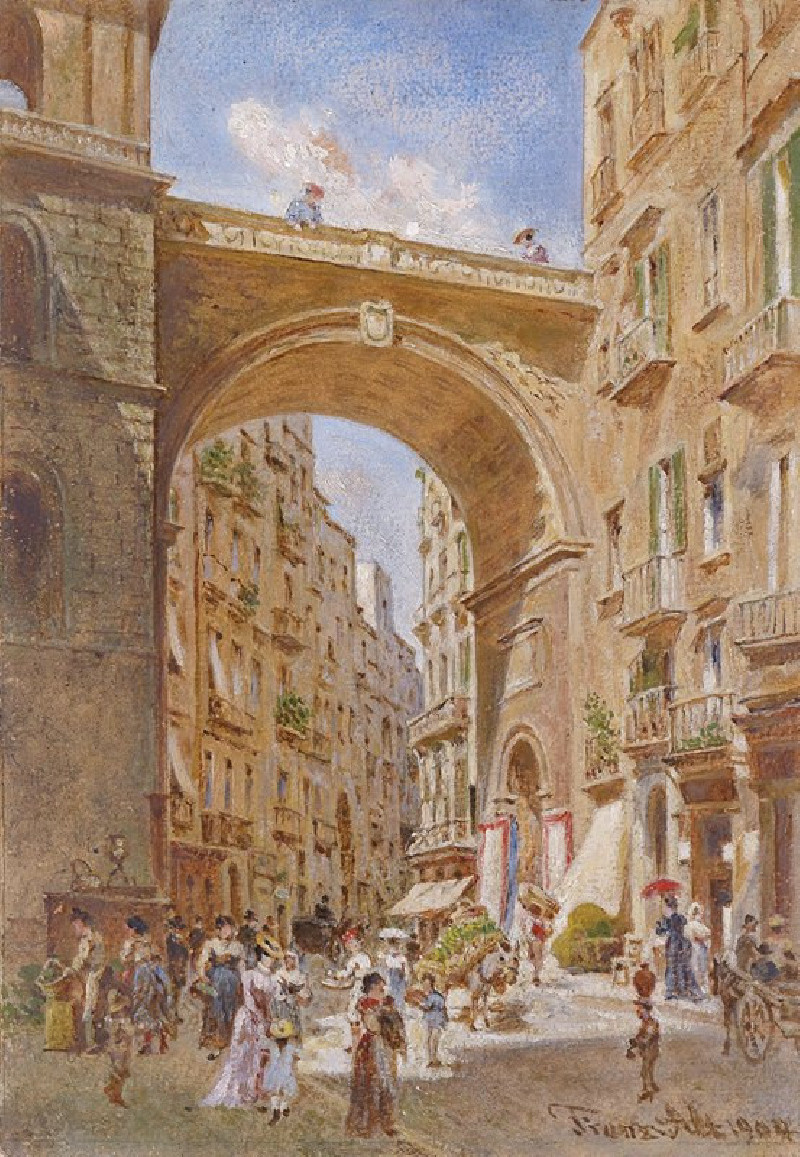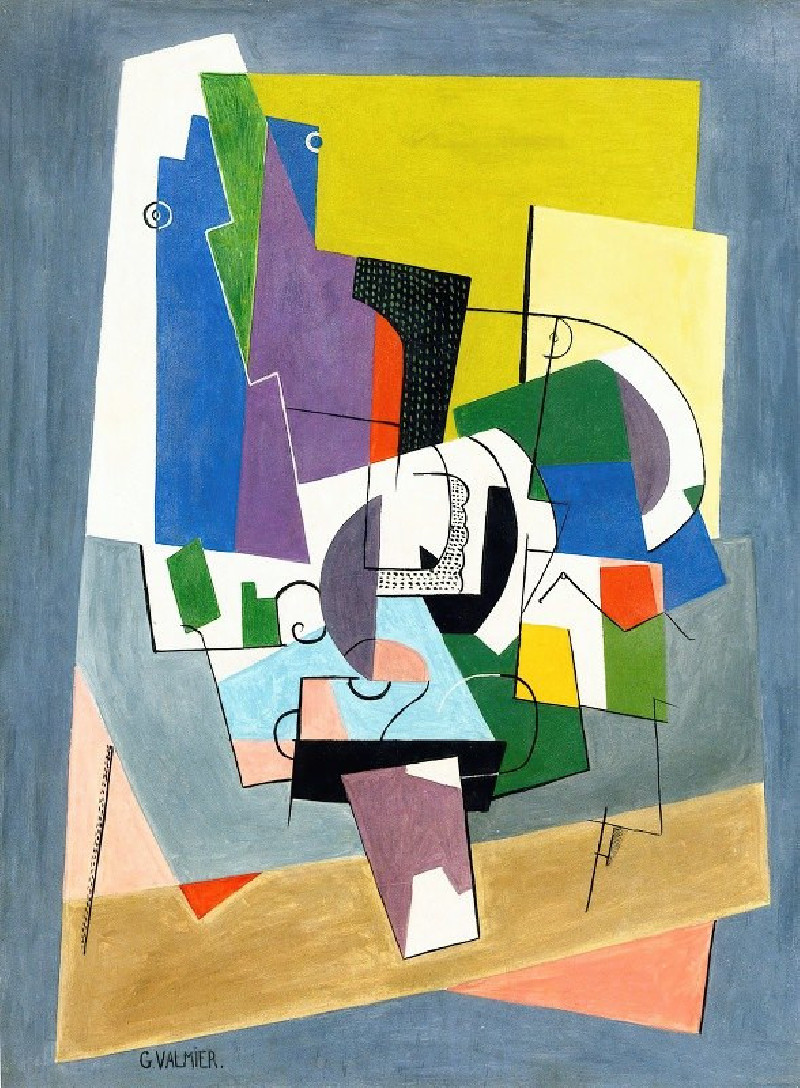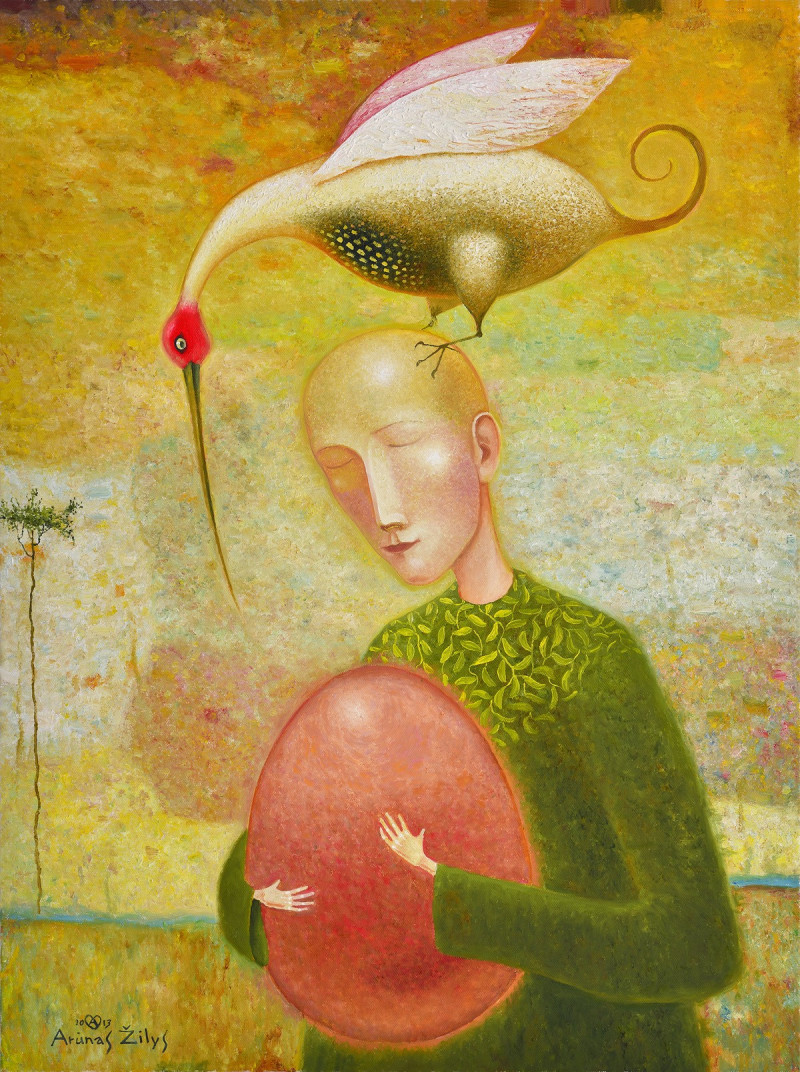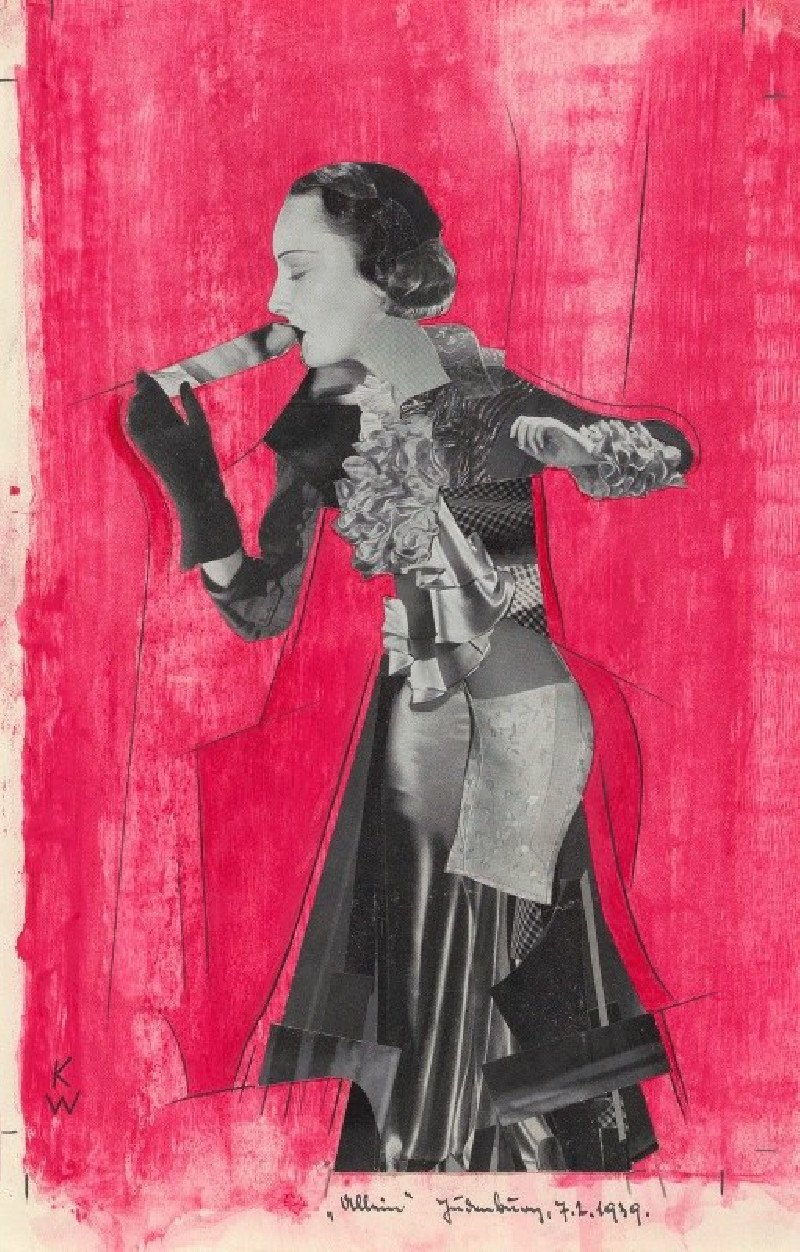Akt ženy (1924–1927)
Technique: Giclée quality print
Recommended by our customers
More about this artwork
Titled "Akt ženy" (Nude Woman), this evocative painting by Konštantín Bauer, created between 1924 and 1927, captivates with its bold expression and fluid strokes. Bauer’s work is a masterful example of expressionism, where the traditional representation gives way to emotional fervor, conveyed through the dramatic contrast of black and white and the abstract form of the human figure.In the painting, the central focus is a female figure, seated and partially abstracted, with exaggerated, swirling lines that suggest movement and a form of internal energy. The use of black ink, applied in broad and dynamic strokes, emphasizes the contours and anatomy of the figure, while also instilling a sense of depth and texture. Surrounding the figure, lighter strokes and shadows give a sense of an undefined, ethereal space, focusing the viewer's attention more acutely on the subject.Bauer's technique and composition create a striking interplay of light and dark, drawing the viewer into a deeper contemplation of the human form as not just a physical entity but also a vessel of emotional and expressive power.
Delivery
Returns
Konštantín Bauer was a Slovak painter.
Konštantín Bauer was born on November 24, 1893 in Slovenská Ľupča. He spent his childhood in Banská Bystrica. At the age of fifteen, he moved with his parents to Košice, where he graduated from high school. After graduating in mechanical engineering in Budapest in 1915, he worked briefly as an engineer in Novo Mesto pod Šiatrom. From 1916 to 1918 he worked as a railway engineer in Transylvania and then as a civilian employee at the Ministry of War in Vienna.

